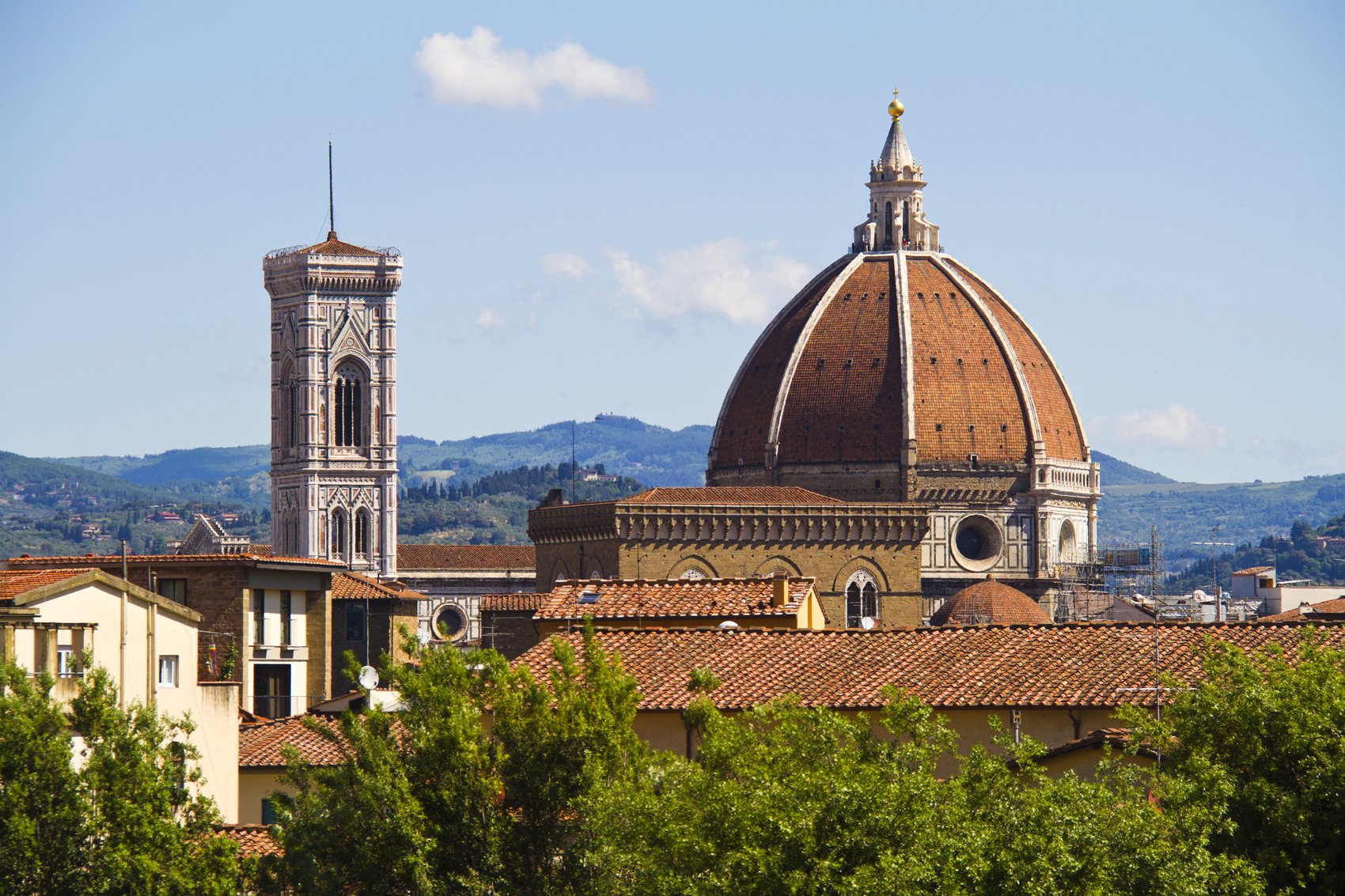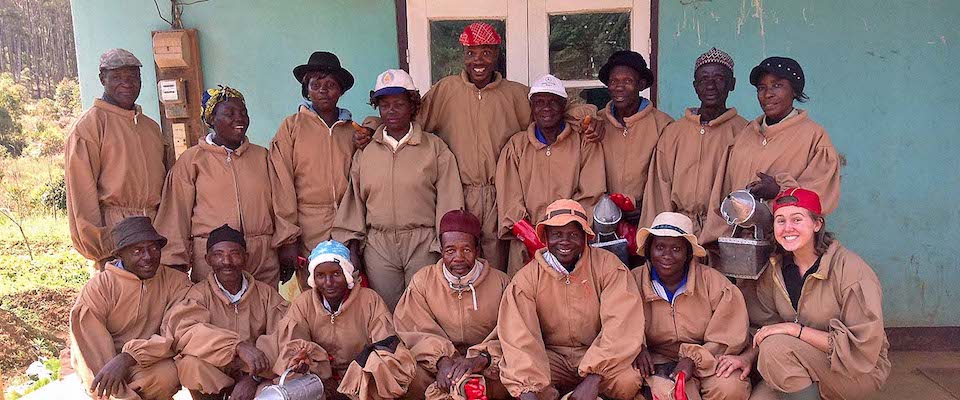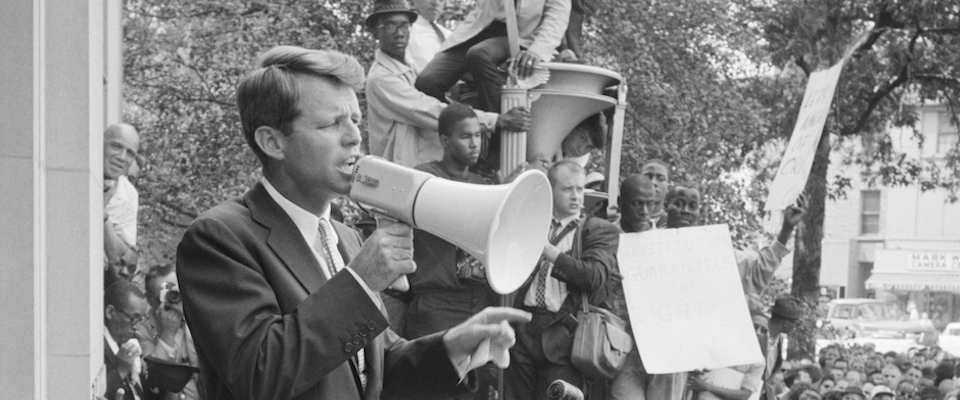In 1961, the space race between the Soviet Union and the United States was heating up, relations between Cuba and the U.S. were cold, and soon after John F. Kennedy’s inauguration as America’s youngest president, he asked Congress to fund a new Peace Corps. The Peace Corps had its inception in a campaign speech Kennedy gave on the Michigan campus in October 1960, when he challenged students to consider spending at least part of their lives helping the poor overseas.
The words of both President John F. Kennedy and Sargent Shriver, Kennedy’s choice to launch the Peace Corps in 1961, made a lasting impact on the University of California, Berkeley.
Shriver said this in his address at Berkeley on March 31, 1965:
Once in every generation, fundamentals are challenged and the entire fabric of our life is taken apart, seam by seam, and reconstructed. The 1930s, under the spur of economic disaster, was such a time, and our economic and political and social life was never again the same. Such a time is now at hand again, and it is clear, that many of you are unreasonable men, restless, questioning, challenging, taking nothing for granted. And I agree with you. But protest and demonstration are not enough. President Kennedy once said that “one way to stand ‘up’ for your rights is to sit down ….” But that’s only one way—and the next step is service.
The response from the school has been more than 3,600 Peace Corps volunteers, outpacing every other college in the nation by a significant margin. And Kennedy’s call to service continues to resonate.

As the nation prepares to mark the centennial of Kennedy’s birth on May 29, 2017, it’s timely to ask: Why, and how, did Berkeley become, and continue to be, a mainstay of Kennedy’s Peace Corps?
The answer has to do with where America was as a country when Kennedy first lit the flame, in something of an impromptu, post-midnight speech at the University of Michigan.
At large public schools such as Michigan and Berkeley, “there was a lot of self-confidence in the leadership and the professorship at the time, that they had a really important role to play in America,” said Elizabeth Cobbs, author of All You Need is Love: The Peace Corps and the Spirit of the 1960s, the first historical book on the agency. “This was the place where innovation was going to happen and all these bright, exciting people were going to do great things.”
Berkeley’s makeup made it a perfect place for the Peace Corps to establish itself in the turbulent 1960s. But the agency’s enduring popularity also has to do with the timeless appeal of the Peace Corps’ mission: Providing an opportunity for idealistic but determined new college graduates to make a difference in a less prosperous part of the world.
“Berkeley tends to draw in the type of people that are interested in the global mindset, interested in the various ways in which we can help other people and learn from other people,” said Sarah Edwards ’13, a Peace Corps volunteer to Cameroon who is now a program officer at The Forgotten International, which aims to eliminate extreme poverty, especially for women and children. “But Berkeley also prepares us to be successful in that type of work.”

“The Peace Corps has always had three goals—mobilizing the skills, knowledge, and enthusiasm of mostly young Americans to join local communities in addressing their problems, teaching the world about America, and teaching America about the world,” said George Scharffenberger, program director of Berkeley’s Masters in Development Practice and formerly the school’s special assistant for International Development Policy and Practice.
“The open secret is that the assumed unidirectionality of ‘us helping them’ of those early days was never true. Arguably, the volunteers have always brought back more than they left behind. But in a globalized world facing climate change, pandemics, and highly interlocked economies, that’s more than OK, since there are few challenges that are ‘theirs’ that aren’t in some way also ours—and vice versa.
“I’m not clear how much of all that can be attributed directly to JFK, but I am certain that the vision he inspired is still very much alive in the Peace Corps and that it resonates with today’s Cal students—as does its association with a leader whose stature stands in sharp contrast to what students see on the national stage today.”
The early days
The initial appeal of the Peace Corps and Kennedy’s challenge of service to students doubtless owed something to the man’s personal appeal. But equally enticing were his view of the United States’ place in the world and the actual power of major public universities at that time.
“I think it was successful because it was one of those events that was in the air,” said Cobbs, a historian at Texas A&M University and a research fellow at Stanford University’s Hoover Institution. “A really good leader doesn’t just invent something out of whole cloth, but rather somehow channels the popular spirit and will and then takes it to a new level.”

The Peace Corps, Cobbs observed in her book, “reassured a broad cross-section of Americans during a turbulent period that there was at least one aspect of their nation’s policy that was indisputably good.”
Kennedy was aware that there was a feeling in America that the West had been exploitive and needed to make amends and new connections abroad, Cobbs said.
“People in the ’60s wanted to be different,” she explained. “They didn’t want to just not be their parents. They wanted to find a way to be better Americans. And I think the Peace Corps was just absolutely about that.”
At the same time, with the G.I. Bill boosting enrollments and more money flowing into public education, schools such as Michigan, Berkeley, Ohio State, Wisconsin and others were coming into their own. “I think it was a period where there was a lot of faith and belief in these newly expanded, big public institutions,” Cobbs said.
So, it made sense that the Peace Corps would thrive in places where students were the most idealistic. Berkeley, Cobbs said, “was the place where innovation was going to happen and all these bright, exciting people were going to do great things.”
Esprit de Peace Corps
Among the first Berkeley alumni drawn to the Peace Corps were Levi Strauss chairman emeritus Robert Haas ’64, who went to the Ivory Coast from 1964 to 1966, and former California Congressman John Garamendi ’66, who served in Ethiopia from 1966 to 1968.
The Peace Corps would, of course, suffer growing pains.
The initial idealism gave way to self-doubt during the Vietnam War in the late 1960s and early 1970s. Some worried the Peace Corps was just “window dressing on imperialism,” Cobbs said.
And there have been tragedies. In 2013, Nick Castle ’12 died from a gastrointestinal illness seven months after arriving in China. (An outside American expert hired by the corps to investigate concluded that despite medical missteps by a Peace Corps doctor who missed signs of serious illness, Castle’s death could not have been prevented.)
“Americans across the political spectrum in every state are willing to sign on to the spirit of the Peace Corps,” Cobbs said. “I think that’s because it represents America’s best hopes of itself, its most hopeful self-image.”
But through the years, the agency, which Cobbs called Kennedy’s only living legacy, has continued to enjoy bipartisan support, she said, an important factor in its longevity.
The agency’s funding was $437 million in 2016, up $20 million from the previous year. How it will fare under President Donald Trump isn’t known, but the National Peace Corps Association (a nonprofit alumni association for Peace Corps volunteers), two days after his election, began a letter-writing campaign to tell Trump to support a “bigger, better Peace Corps.”
“Americans across the political spectrum in every state are willing to sign on to the spirit of the Peace Corps,” Cobbs said. “I think that’s because it represents America’s best hopes of itself, its most hopeful self-image.”
Whether it’s teaching English, providing health care, or building infrastructure, the Peace Corps makes tangible impacts. But individuals mixing with individuals is really what makes the agency special, Cobbs said.
“It’s this human connection the Peace Corps makes again and again, and that people remember, that is perhaps its biggest success,” she said. “It doesn’t sound like much, but it’s everything.”
Stories of two Cal alumni
More than 220,000 Americans have served in two-year Peace Corps assignments (plus three months of training). Currently, assignments are in more than 60 countries throughout the world, including in Africa, Central America, South America, North Africa and the Middle East, and the Pacific Islands. The work typically involves agriculture, education, and other types of community development. Volunteers receive a stipend that enables them to live in a manner similar to the local people in their community.

Zachary Burt ’01, Ph.D. ’15, is a postdoctoral scholar at Berkeley’s Blum Center for Developing Economies, an interdisciplinary hub for students, researchers, and scholars focusing on global poverty and inequality. His research focuses on household water access, treatment, and use. He credits his Peace Corps time in Morocco from 2004 to 2006 as a major influence on his career direction and for making him better at what he does.
“I gave them an outsider’s perspective on their own problems and that furthered some of their own internal discussions in a way that I hope was at least somewhat constructive,” said Burt, mindful to characterize his role as collaborative.
The work provided clear benefits: HIV education in high schools and building latrines, including raising money online for the equipment and materials. But Burt saw greater value in the cultural exchange, a term he admits “sounds fluffy.”
“Peace Corps is, in my opinion, unmatched all over the world. Peace Corps really does train green, young, just-fresh-out-of-college Americans to live in completely different, oftentimes poverty-stricken, environments and survive and integrate themselves and learn the local language and adjust to this hugely different lifestyle and perspective on the world,” he said.
“It was important for people not to see it as my project but as the community’s project.”
Burt said one of his lasting memories is working with two community groups that struggled to agree on irrigation techniques. “It really stuck with me that on a lot of these vital issues that are really hindering the progress of communities, it’s not always about just money or a lack of technical knowledge. A lot of times it’s about internal social dynamics that people need to resolve within their own communities,” he said.
Edwards also helped make tangible differences during her time in Cameroon from 2013 to 2015. She helped to stabilize a source of running water and helped farmers improve the local food supply. But the relationships made more of an impact on her and, arguably, the community she left behind.
“One of the most important things that Peace Corps volunteers can do is work with the community so that they can feel like they are doing the work,” she said. “It was important for people not to see it as my project but as the community’s project.”
There’s little doubt Edwards immersed herself in the community.
Valentine, her designated work partner in Cameroon, and his fiancée asked her to be the witness for their wedding. She’d only known the couple for a year.
Then and now
Cobbs says that on the day after Kennedy was assassinated in 1963, more people signed up to join the Peace Corps than on any other day. But there has been a recent surge, too. In 2015, the agency received a 40-year high in applications. That was a year after the Peace Corps made a major change, allowing applicants to choose the countries and assignments they’d like to be considered for, rather than the corps deciding where to assign them.
As for how relevant Kennedy still is to the Peace Corps, it’s hard to trace a lasting impact. But he clearly still has his place.
Kennedy is still important “because of the hopes that he raised,” Cobbs said. “Good leaders always speak to the ideals of their societies. They motivate people to be their better selves. That’s always worthwhile for people to hear that message.”
Edwards also feels a connection.
“In my mind, he is the president who represented so much potential. And I think that’ s what the Peace Corps represents as well,” she said. “I am proud to say that I’m part of a program that was created by Kennedy.”
Tom Kertscher is a PolitiFact Wisconsin reporter for the Milwaukee Journal Sentinel and the author of books on two Wisconsin sports figures: Al McGuire and Brett Favre. Follow him on Twitter: @KertscherNews and @KertscherSports.




















